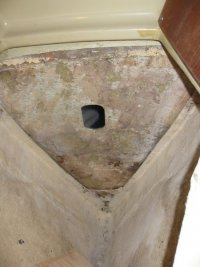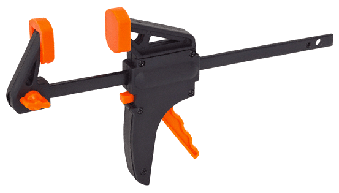wolly bugger
Member II
I just finished removing all the rotten core I had at the bow. Since the damaged area was within the anchor locker, and the bottom skin as been damaged by the smallish fender washer used, I decided to attack it from the bottom. Here is my first question; I left a lip of the old bottom skin of about 1 1/2"-2" from the hull all around and scraped all the rotten core out. My thought was to fill the void between that and the top skin with thickened epoxy, fill the repair area with the new core and use that lip to attach the fiberglass to as I build the bottom skin back. I'm wondering if I might be better off removing that lip and bringing the fiberglass down on to the hull. What will be best?
I also have some 3/8" marine plywood on hand that I wanted to use. I don't think it's flexible enough to use only one piece so will divide the area in about 3 or 4 or 5 pieces to follow the curve of the deck. Do those pieces need to be tight together or is a little gap, let's say no more then 1/4", acceptable? Or should I make just enough grooves in one full piece to make it flex to follow my deck shape?
This will be my first structural repair so any help will be appreciated.
I also have some 3/8" marine plywood on hand that I wanted to use. I don't think it's flexible enough to use only one piece so will divide the area in about 3 or 4 or 5 pieces to follow the curve of the deck. Do those pieces need to be tight together or is a little gap, let's say no more then 1/4", acceptable? Or should I make just enough grooves in one full piece to make it flex to follow my deck shape?
This will be my first structural repair so any help will be appreciated.
Attachments
Last edited:


